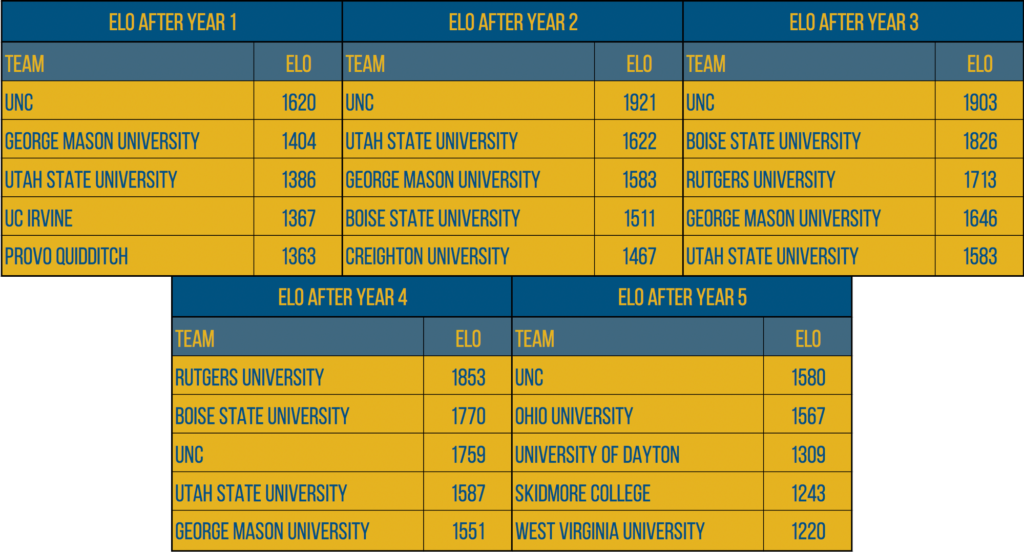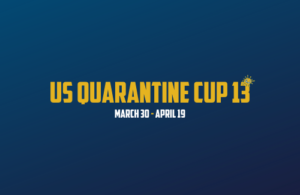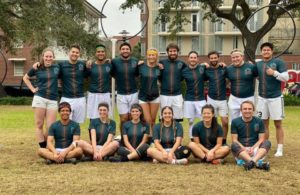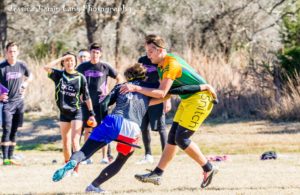- Rule, Britannia, no more?
- Unpopular Opinions: US Quadball Cup 2023
- Proven Contenders: University of Virginia
- Proven Contenders: Rutgers University
- Proven Contenders: University of Michigan
- Proven Contenders: Creighton University
- Different Perspectives: A Look Inside USA Ultimate
- Antwerp QC, Much of Belgian Core, Leaves Competitive Quidditch
The Uphill Climb for New College Teams
- Updated: November 6, 2018
In the age of qualification-era nationals (2012-present), there have been 206 college teams officially competing in the U.S. The large majority of those teams–145–were active during the World Cup 6 season (2012-13). Only 61 are what could be considered “new” college teams, at least within the scope of our Elo system. This means that these newer teams began with a starting Elo rating of 1300, rather than the league average of 1500, and as a whole, things have not been easy for those 61 teams.
Firstly, the average survival time for those 61 teams is 1.91 years, whereas the average survival time for teams that existed since 2012 is 3.07 years over the same period.* Although this data is slightly biased against the new team category–which includes 26 teams that are still active but have started in more recent years–the fact remains that 35 or 57 percent of those new teams no longer remain. Meanwhile 73 out of the 145 of the preexisting college teams–or a little over 50 percent–are still active, despite those teams needing to survive for a longer period to make it until today. When we look at the average end-of-season Elo rating for all official college teams in competition, it too paints a bleak picture for these newer teams. When averaging each group’s Elo ratings since 2013, the pre-existing teams (n=445) have an average season-ending Elo rating of 1504, while new teams (n=145), on average, end the season with a rating of 1309. The average team founded since 2013, then, is not only less likely to return each year than their anteceding teams, but will return nearly 200 points worse.
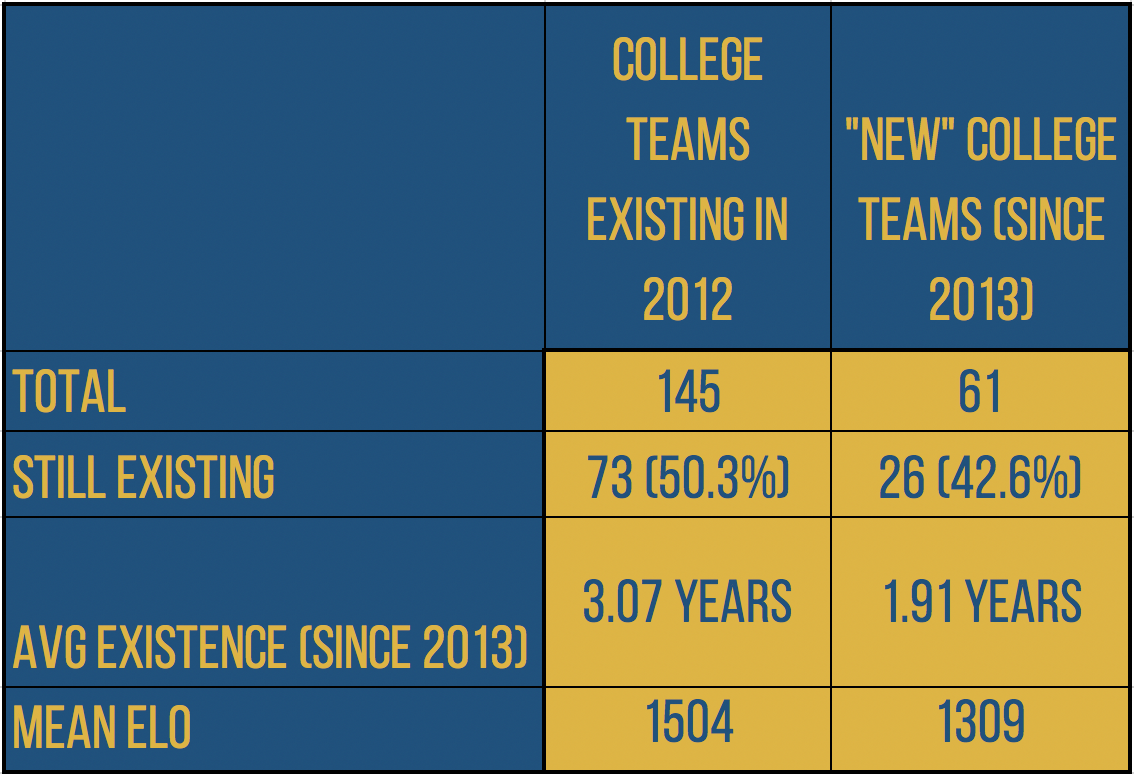
Despite this doom and gloom, there have been several standouts among the fray. Not every team founded since 2013 has been damned to obscurity, although the few that have flourished have been dismayingly few and far between. The best new team is currently UNC, which started in 2013 and peaked in its second season with an Elo rating of 1921. Following UNC are Rutgers University, which started in 2013 and peaked in its fourth season with an Elo rating of 1853 and Boise State University (now folded into Nomads), which started in 2013 and peaked in its third season with an Elo rating of 1826. No team that started after 2013 has finished a season higher than 1700, and the only teams to have finished over 1500 are George Mason University and Utah State University, which both started in 2014, and did so in their second season. That said, Utah State, now in their fifth season, currently sits with a rating of 1707 and Creighton University, started in 2016, currently has a rating of 1524; both are looking to buck this trend should those ratings hold. Presented below is a table that shows the highest five Elo ratings achieved by new collegiate teams based on how many years since their creation. Few teams founded in 2013 have made it all five years, which helps account for why the values in that table are so low.

